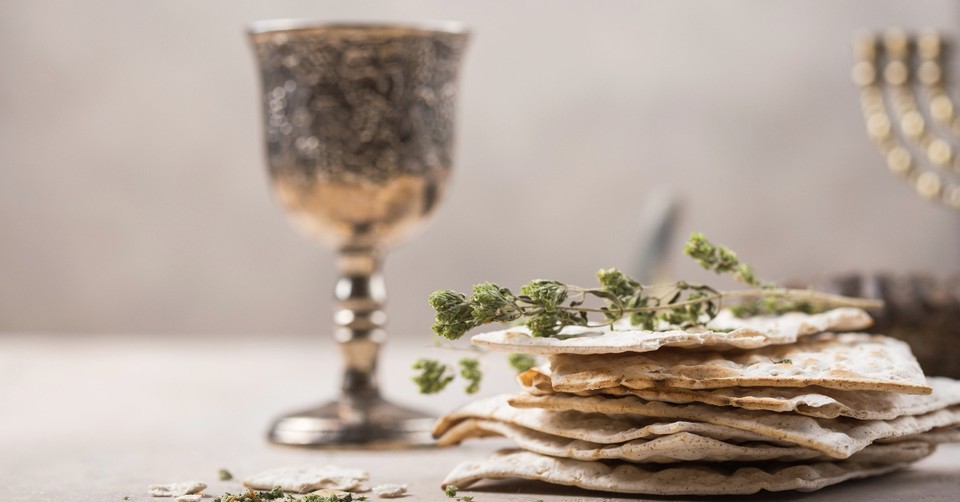How Does the Celebration of Passover Point to Jesus’ Resurrection?

As we find ourselves witnessing the rich traditions and solemn reflections of Jewish Passover – which runs through April 30 this year – it’s important to recognize the profound link these religious observances share with Jesus’ resurrection at Easter. The sacred occasions of Resurrection Day and Passover Week are not isolated events but are, in fact, intricately intertwined, each bearing significance that resonates through the annals of history and into the very core of our faith.
Passover: A Legacy of Liberation
Foundationally, the term ‘Passover’ stems from the original moment when the Angel of the Lord “passed over” the homes of the Israelites who had put the blood of the lamb on their doorposts as the last plague occurred before Moses led the children of Israel out of slavery in Egypt. Later, when the Lord used Moses to lead them into the Promised Land, they stopped at Mount Sinai, and the Lord gave the command for the children of Israel to remember that the death angel had passed over, thus ushering in the Passover remembrance meal.
The second piece to this narrative is that Passover stands as a fulfilling testament to God's unwavering faithfulness and commitment to deliver His people from bondage. Just as the children of Israel were brought from the kingdom of darkness and slavery in Egypt to that of light and freedom within the Promised Land, we are pointed to the ultimate picture of the Gospel message when Jesus Christ, the Lamb, was crucified as an atonement for the sins of the world. This had to occur so that those who believe in Him could be purchased by his blood and not destroyed by the death angel—transferred from the Kingdom of darkness into the Kingdom of Light.
Passover Traditions and Symbolism
At the heart of Passover observance lies the Seder, a ceremonial meal meaning “order,” replete with symbolic elements that vividly depict the Exodus story. This process includes rituals such as removing yeast from the house, lighting candles and partaking in symbolic foods. From the bitter herbs representing the bitterness of slavery to the unleavened bread symbolizing haste and purity, each component serves as a memento in the journey of redemption for the Israelites.
Matzah, the unleavened bread central to Passover, symbolizes haste and purity. Its flatness recalls the Israelites' swift departure from Egypt, while also representing Jesus as the sinless Bread of Heaven, without leaven. During the Seder, breaking the matzah evokes Jesus' sacrificial brokenness, with its pierced holes reflecting his wounds, and stripes symbolizing healing. Alongside the matzah, four cups of wine are served to drink, signifying the role of Jesus’ blood in the establishment of the New Covenant, underscoring the spiritual significance woven into the fabric of the Passover celebration.
Central to the Passover Seder is the Afikomen, a piece of unleavened bread hidden away and later retrieved, symbolizing the coming Messiah. This ancient tradition finds its fulfillment in the person of Jesus Christ, whose sacrificial offering brings salvation to humanity. Just as the Israelites awaited deliverance from physical bondage, so too did mankind await liberation from sin and death through the promised Redeemer. The significance of the Afikomen’s ritualistic placement within the Passover meal serves as a poignant reminder of God's providential plan for humanity's salvation—a plan already fulfilled through the life, death, and resurrection of Christ Jesus.
Fulfillment Through Jesus’ Death, Burial and Resurrection
The narrative of Jesus' life, death, and resurrection intertwines seamlessly with the ancient tradition of Passover, revealing profound parallels between the Old Testament’s sacrificial lamb references and Jesus as the ultimate Lamb of God. From the Genesis account of Adam and Eve's sin to the prophetic utterances of Isaiah, the symbolism of atonement through blood sacrifice sets the stage for Jesus' redemptive mission.
The pivotal moment of Jesus' crucifixion echoed the sacrificial lamb slaughtered during Passover in a perfect and incomparable way to any prior sacrifices, fulfilling centuries of prophecy and divine planning. Just as the Passover lamb's blood protected the Israelites from death, Jesus' sacrificial death on the cross became the ultimate atonement for humanity's sins. His willingness to endure suffering and humiliation exemplified the depth of God's love and the extent of His sacrifice for the salvation of mankind.
Following His crucifixion, Jesus' burial served as a somber interlude, a moment of anticipation before the dawn of redemption. His body was laid to rest in a nearby tomb, satisfying the requirement that the Passover lamb's flesh not remain until morning and fulfilling the prophecy that his body would remain unbroken in death.
On the third day after His crucifixion, Jesus rose from the dead, triumphing over sin and death and fulfilling the promise of new life. His resurrection paralleled the ‘Feast of First Fruits,’ symbolizing the beginning of a new harvest and the dawn of redemption for humanity. In this miraculous event, Jesus emerged as the conquering Messiah, the embodiment of hope and the fulfillment of God's redemptive plan.
The profound connection between Jesus and the Passover narrative underscores the continuity of God's plan throughout history. Through His sacrificial death and triumphant resurrection, Jesus fulfilled the ancient prophecies, ushering in the New Covenant of grace through faith.
Living in the Light of Redemption
In reflecting on the profound significance of Jesus' sacrifice and resurrection during this Passover season, may we embrace a renewed sense of hope and confidence in God's plan for our lives. Just as the Passover lamb's blood served as a seal of protection for the Israelites, Jesus' sacrificial death offers us the assurance of redemption and salvation. We are reminded that no matter the challenges we face, God is in control, and His promises endure throughout the ages.
As recipients of God's grace and mercy, we are called to embody the sacrificial love exemplified by Jesus. Just as He willingly laid down His life for us, we are called to serve others with humility and compassion. As "lambs of God," we have the opportunity to participate in His redemptive work by fully offering ourselves as living sacrifices to Him. Let us seek opportunities to serve others, to share the Gospel message, and to be agents of hope and healing to a broken world in need. Together, let us go forth with gratitude and purpose in the midst of this Passover season and into the future, boldly proclaiming the good news of Jesus' resurrection, inviting others to experience the life-changing power of His love.
Photo Credit: ©iStock/Getty Images Plus/gorchittza2012
Laurie Vanderpool is cofounder of LiveBeyond, a faith-based humanitarian organization bringing medical and maternal healthcare, clean water, education, community development and the gospel of Jesus Christ to the oppressed in Thomazeau, Haiti. LiveBeyond’s work continues there despite the current upheaval in Haiti, offering a place of safety and refuge outside the turmoil in Port-au-Prince.
Originally published April 25, 2024.







